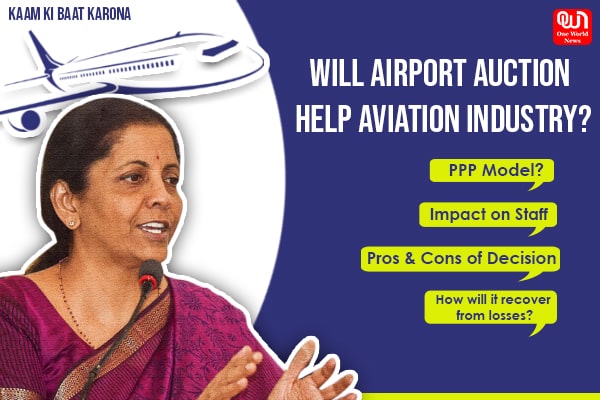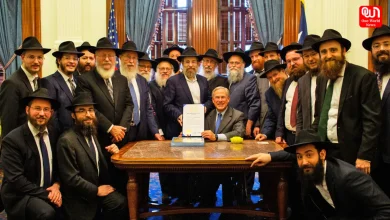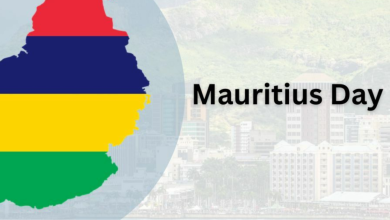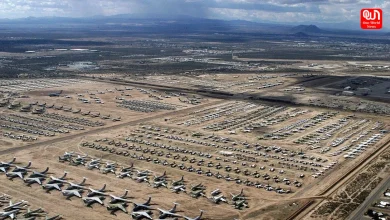COVID-19 crisis: Auction of Airports, Is it like rearranging deck chairs on Titanic?

Auctioning Airports during crisis may lead to public airports being sold at below fair value: What will be the impact of this decision?
Covid-19 has taken a toll on the aviation industry. A lot of them were already running into losses, and COVID-19 has just made it worst. Almost all Indian airlines have introduced cutting measures that includes pay cuts and leave without pay. To fight pandemic, airports too need a bailout. Keeping that in mind, Finance Minister Nirmala Sitharaman in the fourth tranche of Rs 20 Lakh Crore package announced to auction 6 more airports, a view to develop them on PPP. Apart from it, she announced additional investment of Rs 13,000 crore made by private players in 12 airports auctioned in first and second rounds. She further added tax regime for aircraft maintenance, repair and overhaul will be rationalised.
Now, let us understand the impact of this decision. Here are a few questions that we will try to answer in this article:
1. Why it has become important to auction airports?
2. How it will impact the pockets of passengers?
3. How this step will impact jobs and salaries of the existing employees?
4. Government will get below fair value at this moment?
Let us first understand what is PPP Model?
PPP stands for Public – Private Partnership. This model of privatisation involves long term contracts of more than 20 years. If we look at the current status, India has 5 PPP airports each at Mumbai, Delhi, Cochin, Hyderabad and Bengaluru.
PPP Model contributes to more World Class Airports:
PPP model can contribute to more world class airports. Airport Authority of India (AAI) has awarded 3 airports out of 6 bid for operation and maintenance on PPP basis.
Additional investment by the private players in the 1st and 2nd rounds expected to be Rs 13,000 crore.
Annual revenue of 6 airports in 1st round Rs 1000 crore(against current profits of Rs 540 crore annually) AAI will get also get the down payment of Rs 2300 crore.
Aircraft component repair and airframe maintenance are expected to increase from Rs 8000 to 2000 crore in next two years.
Read more: After Pakistan, Locust invades India’s food security
Take a look:
List of Private Airports in India
- Bokaro, Jharkand
- Birlagram, Nagda, Madhya pradesh
- TAAL Airfield, Hosur, Tamil Nadu
- Burnpur, West Bengal
- Baikunth, Chattisgarh
- Mithapur, Gujarat
- Rourkela, Orissa
- Raigarh(JSPL), Chattisgarh
- Mundra Port, Gujarat
- Kankroli, Udaipur, Rajasthan
- Savitri Jindal Airstrip, Angul, Orissa
- Beas, Punjab
- Ravva Heliport, Ravva, Andhra Pradesh
- Shirpur, Maharashtra
- Sri Sathya Sai Airport, Puttaparthy, Andhra Pradesh
- Banasthali, Rajasthan
All these are owned by private organizations and are categorized as private airfields, not for public use unless authorized.
Why it has become important to auction airports?
The aviation sector in India is struggling to survive. To give the sector bail out, the auction decision was announced. In that case, it becomes important to privatise airports. It is a good push to keep the momentum on. To simply put – to recover the losses government has to auction the airports. That’s the only way out to deal with the situation else a lot of them are on the edge becoming bankrupt.
Will it impact the pockets of the passengers?
When airports are handed over to private players, passengers get more facilities. The experience gets better. But it makes a dent on their pocket. Availing premium services means spending more from the pocket. Tickets get costlier.
Other Drawbacks of the decision
The government has to look for global trends, where most of the airports are in public hands. Privatisation will only lead to AAI losing critical financial resources and assets for short-term gains to the treasury.
Notably, one of the most crucial factors in airport development is finance, especially from an airline’s point of view. A lot of things has to be kept in mind by airline companies while starting a new airport such as: will it make sense in terms of economic viability, recovering costs with some profit margin, the price of fuel to be delivered there (fuel is taxed by both the Centre and the states), the demand for flights from and to that place and hence, how should the ticket be priced etc.
Look at the global Trends:
If we talk about the major neighbourhood of India, which attracts a lot of Indian travellers, are controlled by government or by the government controlled entities. These include the lavish airports at Singapore, Kuala Lumpur, Bangkok, Dubai, Doha, Sharjah, Muscat or Istanbul. It is imperative that the government keeps these facts in mind before going in for outright sale of such critical and valuable assets for short-term cash gains or injection into its treasury.
Existing Employees and Salaries after Privatisation:
Privatisation do impact the existing employees. The move has been opposed in the past. There is always a ratio of 60 percent government employees and 40 percent private employees. The private company has the right to sack the employees. But if we look at the positive side a lot of deserving candidates get the opportunity.
Will government get below fair value this moment?
According to an article in The Mint, Keeping in mind the chaos of COVID 19, currently, there will be only 2-3 serious bidders (since it is a 50 year contract) who will be able to raise the debt and equity in a liquidity –strapped market. This could lead to government getting below fair value. The article also highlighted that airport sale prospects would not improve until the airlines get them right.
A lot of industry experts believe things will only get better once the domestic demand recovers and airlines can rebuild their balance sheets. According to them, the reforms announced were as usual business steps.
Bonus: Read Common Models used all across the globe to Develop Airports, PPP is not only way out?
There are other models too:
Read more: COVID 19 VS Hunger in India: How 20 lakh crore package will benefit Migrant workers?
Government Department or Ministry/Agency:
In this type of model, the government owns and operates the airport. It is done through a ministry, for example, transport and infrastructure. One benefit is that the government keeps control of a strategic asset. On the other hand, the investments usually respond to political cycles, more than technical or financial rationales. Notably, the government sometime creates a specific agency to oversee the planning and operation, however, the control remains firmly within the government. Netaji Subhash Chandra Bose International Airport, Kolkata is an example of an airport operated through this model.
Corporatization: In this model, an independent entity is created and it is responsible for planning and operating. Changi Airport in Singapore is one of the most successful examples of corporatization. This model assures the continued investment and profitability. It can hire It has ability to hire people and can sign contracts with private contractors. The airport works in a corporate manner and ownership lies with the government.
Service Contract: This model allows publicly owned airports to “buy” private capabilities. Notably, these airports can use this model for specific assets or services, such as for the Dubai airport, which had a contract with Siemens Postal for their airport baggage handling service.
Public-Private Partnership (PPP)/Concession: This model transfers the most risk to the private sector, since it could be responsible for planning, financing, executing, and operating the airport. Usually, this model involves long-term contracts of more than 20 years. Presently, India has 5 PPP airports each at Mumbai, Delhi, Cochin, Hyderabad and Bengaluru, which together handle over 55 per cent of country’s air traffic.
About the Section
This program has been created as an ideation group for Nation building – to find areas where we as a Nation need improvement, and find and generate ideas to create a happier, more abundant and healthier Nation.
The idea is to observe the different Nation building programs of successive Governments, of society at large, and learn from them – both positive and negative – so that we can move ahead in a positive direction, instead of finger pointing and fault finding.
Content Contribution – Ankur Kumar and Poonam Masih
Have a news story, an interesting write-up or simply a suggestion? Write to us at info@oneworldnews.com







